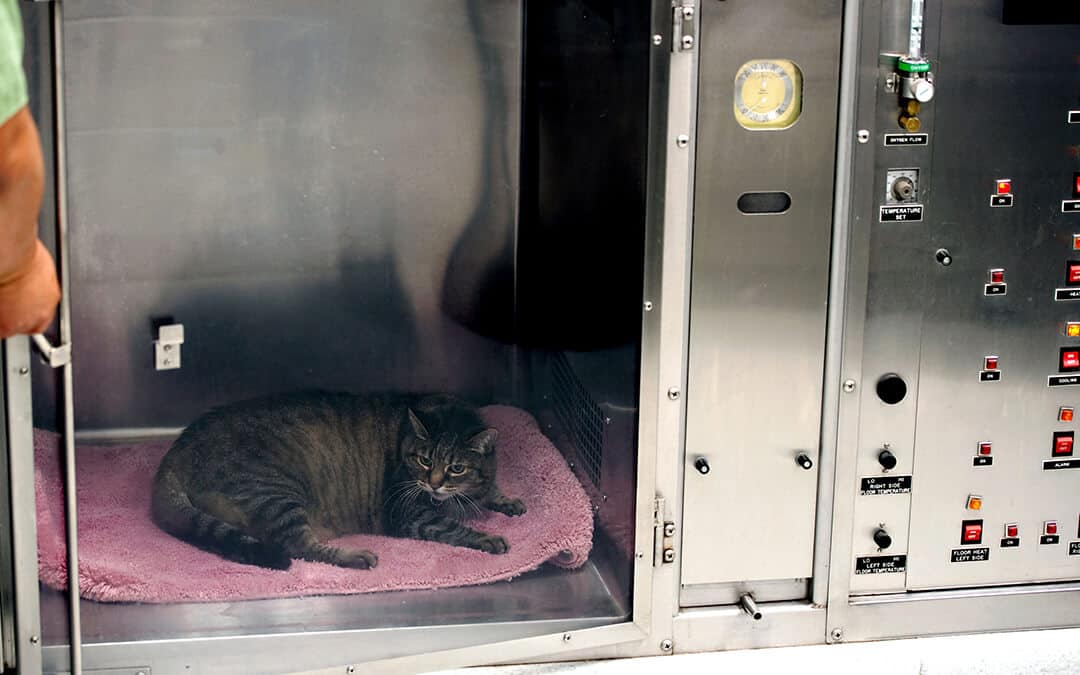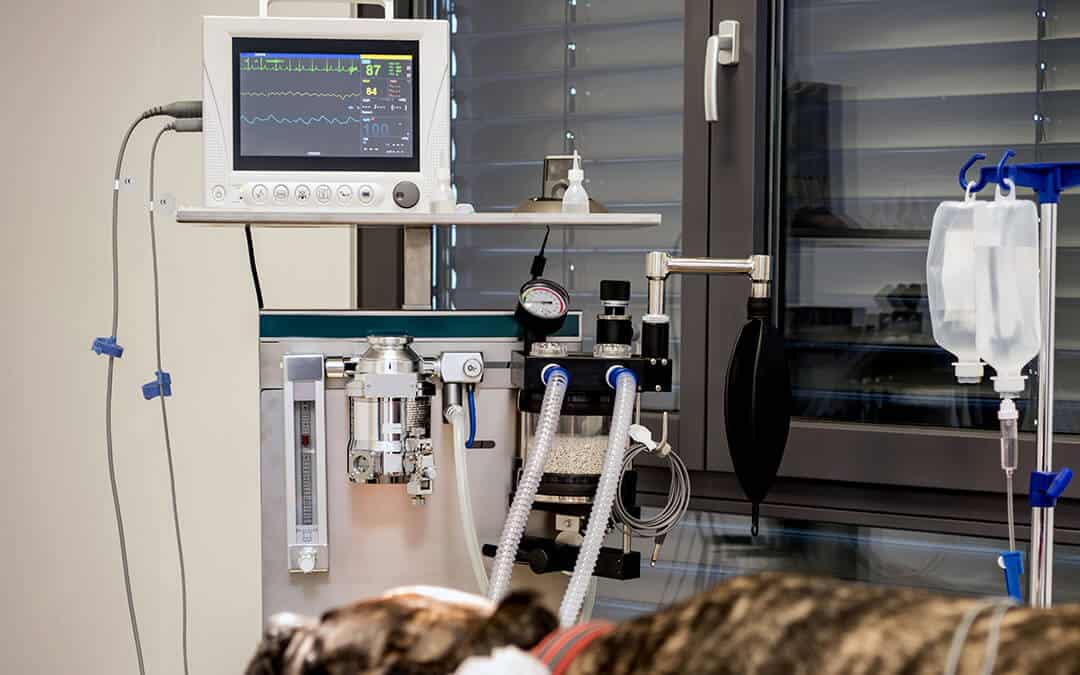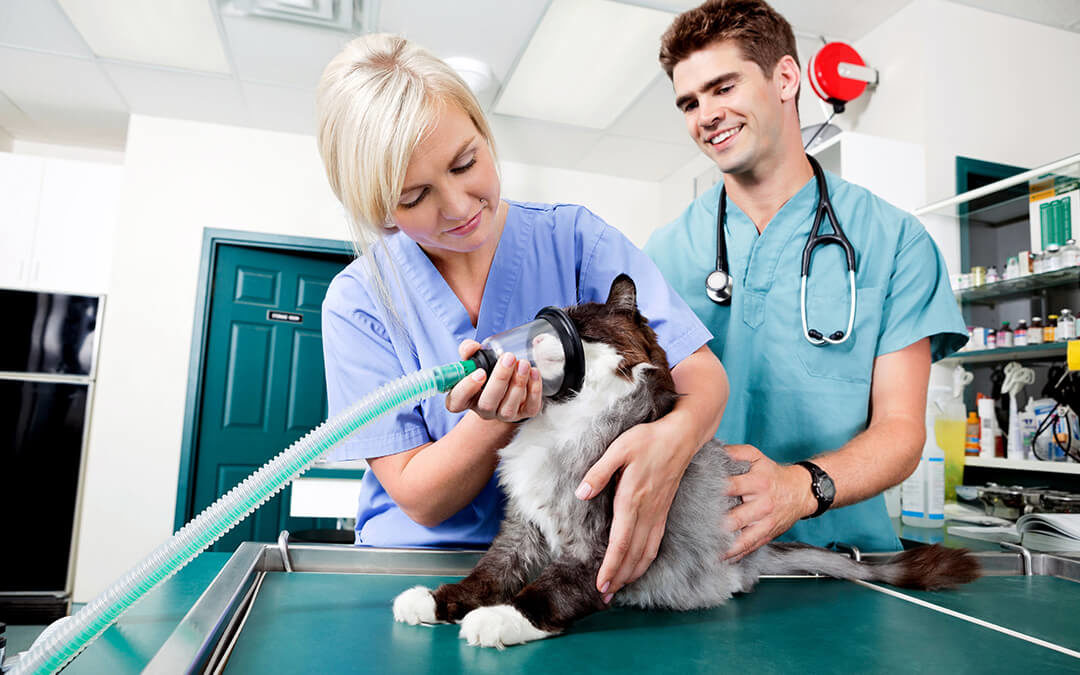If an animal patient—or pet—shows difficulty breathing? Oxygen therapy will be the immediate treatment in a veterinary clinic; while at the same time, we will work to understand the causes of the pet’s breathing impairment. Obstructed airway? Congestive heart failure? Typically, pulse oximeters are used to determine the level of oxygen in the pet’s bloodstream. This is done by clipping a probe onto a tail, lip, or ear—whatever choice is the least invasive and aggravating to the animal.
And sometimes, animal patients in need of accelerated wound care or treatment for arthritis, for example, can receive oxygen therapy through hyperbaric oxygen chambers. While this is a relatively new way to administer the healing benefits of oxygen to the animal patients within your care, it is an important therapy to put on your radar.
Here are five ways by which oxygen therapy is delivered to animal patients, including the relatively new technique of hyperbaric oxygen therapy.

1. Oxygen Cages
Depending on the set-up in your veterinary clinic or hospital, oxygen can be administered in several ways. First, there are specially designed cages for the administration of oxygen to a pet in need. Typically, these cages feature clear plexiglass doors (as opposed to bars which can sometimes heighten the stress of the animal). Instead, the see-through cage can create a calmer environment for the pet experiencing distress. These oxygen cages for pets feature a valve that allows you to control the amount of oxygen delivered into the cage. This type of oxygen administration does have size considerations—your friendly Great Dane, for example, will be better suited for another type of oxygen delivery, covered below.
2. Oxygen Masks
The next type of oxygen delivery in veterinary medicine is the old tried-and-true method: the mask. If you are working with an animal patient such as a dog or a cat, veterinarians can hold a mask over their noses in order to administer the proper amount of oxygen. This is minimally invasive and does not require the pet to be moved from your table, floor, or stable.

3. Portable Oxygen Delivery
Third, oxygen can be delivered through portable units for pets in need of on-the-go treatment. This method might be deployed for animal patients in transit to receive tests such as EKGs, cardiac ultrasounds, and more.
4. Breathing Tubes
Veterinarians can also administer oxygen directly into a pet’s nasal passage through the use of special tubes, if the mask or oxygen chambers are not a viable option.
5. Hyperbaric Oxygen Therapy
And finally, today, across the U.S. in pioneering veterinary clinics and educational institutions, hyperbaric oxygen therapy is being used to treat everything from swelling, smoke inhalation, and trauma to carbon monoxide toxicity, arthritis, non-healing wounds, and more. According to the University of Florida’s Small Animal Hospital1, this method of oxygen delivery entails placing the animal patient in a large chamber
“with 100% oxygen at pressure 1.5 to 3 times that of normal atmospheric pressure. Treatments may last from 1 to 2 hours and are given 1 to 3 times daily, with at least 4 hours between sessions. Most patients appear calm and relaxed during hyperbaric oxygen therapy (many even fall asleep!). The total number of treatments necessary varies according to the type of treatment and the patient’s response.”
To learn more about CalOx’s veterinary oxygen therapy products, contact us today.
